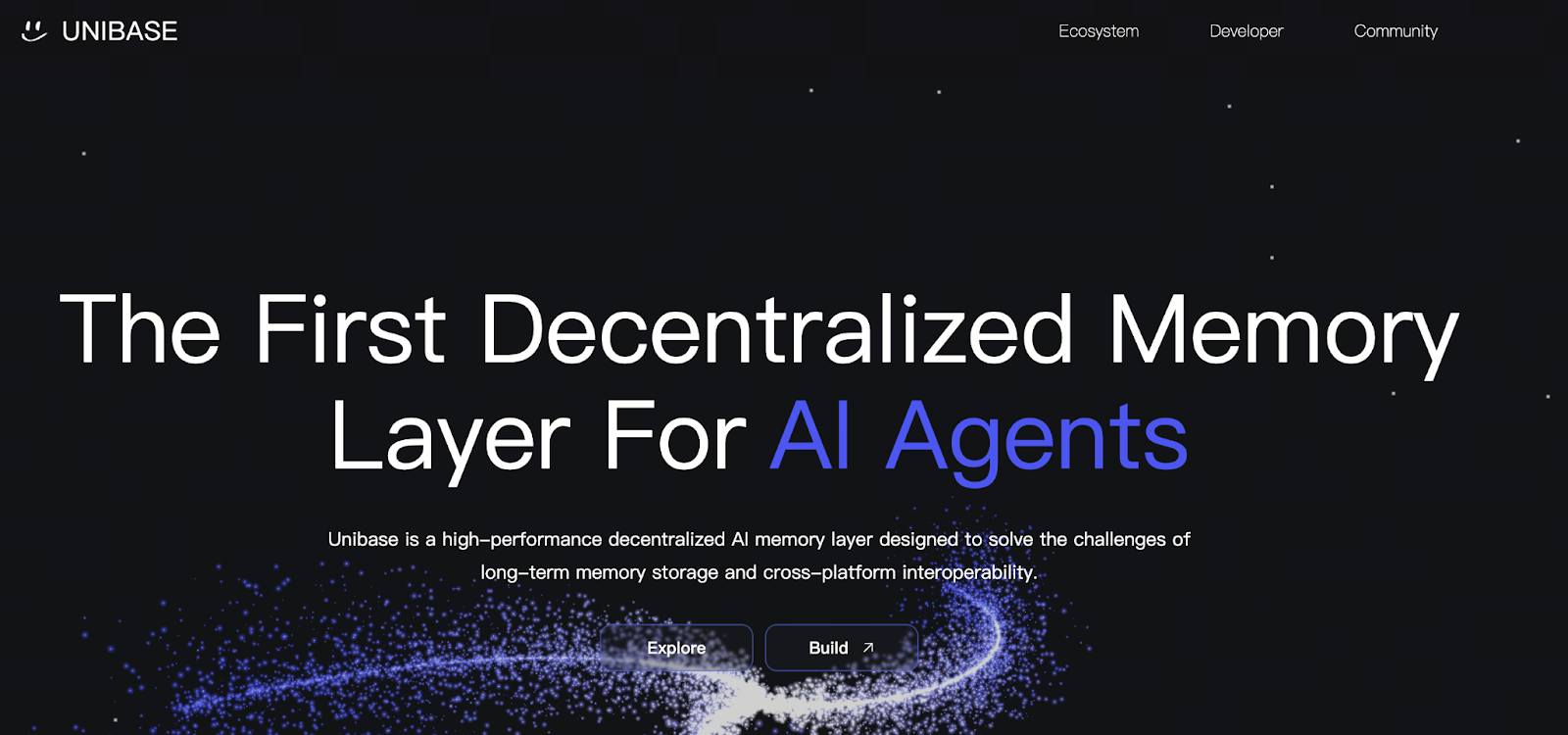Unibase: Pioneering a New Era of Decentralized AI Memory Layer

Image: https://www.unibase.com/
What Is Unibase?
As AI technology evolves, autonomous agents are rapidly emerging as a key industry trend. Yet, most current AI systems lack persistent memory, with data scattered across centralized platforms—making it impossible for agents to share experiences across ecosystems. The team developed Unibase to overcome these challenges.
Unibase is a high-performance, decentralized AI memory layer designed to equip agents with long-term, reliable, and composable memory storage. It enables agent collaboration and evolution through cross-platform protocols.
Key Challenges Solved by Unibase
- Persistent memory limitations: Most AI tools are stateless and cannot retain knowledge across multiple interactions.
- Lack of interoperability: Agents on different platforms are unable to share data or collaborate seamlessly.
- Data sovereignty gaps: Users have no control over their own data or the ability to extract value from it.
Unibase utilizes a decentralized architecture that combines storage, invocation, and verification. This allows agents to build long-term knowledge repositories. It also guarantees user data transparency and security.
Breakdown of Three Core Modules
The Unibase framework is built on three essential components:
- Membase: The decentralized AI memory layer, supporting both structured and unstructured data storage, and leveraging zk-SNARK technology for data verifiability.
- AIP Protocol: The interoperability protocol for agents, establishing standards for cross-agent communication and behavior, supporting identity and reputation systems, and compatible with MCP and gRPC.
- Unibase DA: The data availability layer, delivering throughput exceeding 100 GB/s to ensure real-time access to vast data volumes for AI. It’s compatible with Ethereum, BNB Chain, and other major ecosystems.
UB Token and Tokenomics
Unibase’s native token, UB, has a fixed supply of 10 billion. Its primary functions include:
- Protocol fees: Used for deploying agents, storing memories, and protocol-level operations.
- Governance: Users can participate in governance and determine reward distribution via the veUB model.
- Staking incentives: Stake UB to activate and promote agents, with rewards based on agent activity levels.
- Knowledge mining: Contribute reusable knowledge, prompts, or memories to earn UB rewards.
Unibase employs the ve(3,3) model, tying long-term governance to active community participation and incentivizing ongoing engagement.
Unibase Use Cases
- BitAgent: A multi-agent collaboration platform enabling staking and autonomous interaction.
- TwinX: Instantly converts social media content into self-learning agents.
- Beeper: An intent-driven agent for tipping, digital red envelopes (a form of peer-to-peer transfer common in Asian markets), and DeFi operations on social platforms.
- TradingFlow: An autonomous trading agent that creates trading strategies through natural language input.
Development Roadmap and Future Outlook
According to the official roadmap:
- August 2025: Mainnet launch to support BNB Chain agent creation and trading.
- September 2025: UB Token Generation Event (TGE) to kick off governance and staking.
- Q1 2026: Launch of the “Million Memory Nodes” initiative to expand storage capabilities.
- Q2 2026: Release of AIP 2.0 to achieve cross-platform memory synchronization.
Conclusion
Unibase is more than just a storage solution—it serves as the foundational infrastructure for autonomous AI agents. By enabling persistent memory, cross-platform operability, and decentralized governance, Unibase delivers a scalable backbone for the future Open Agent Internet.
UB is available on Gate’s spot market. For trading, visit: https://www.gate.com/trade/UB_USDT
Related Articles

2025 BTC Price Prediction: BTC Trend Forecast Based on Technical and Macroeconomic Data

Flare Crypto Explained: What Is Flare Network and Why It Matters in 2025

Pi Coin Transaction Guide: How to Transfer to Gate.com

How to Use a Crypto Whale Tracker: Top Tool Recommendation for 2025 to Follow Whale Moves

What is N2: An AI-Driven Layer 2 Solution


